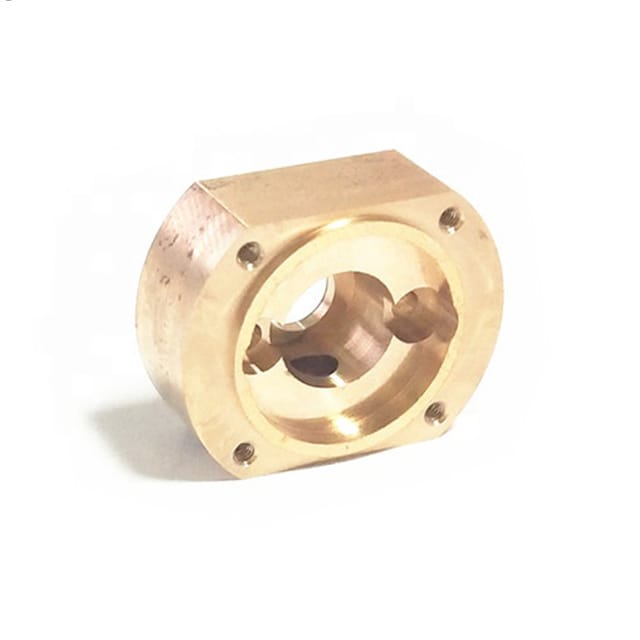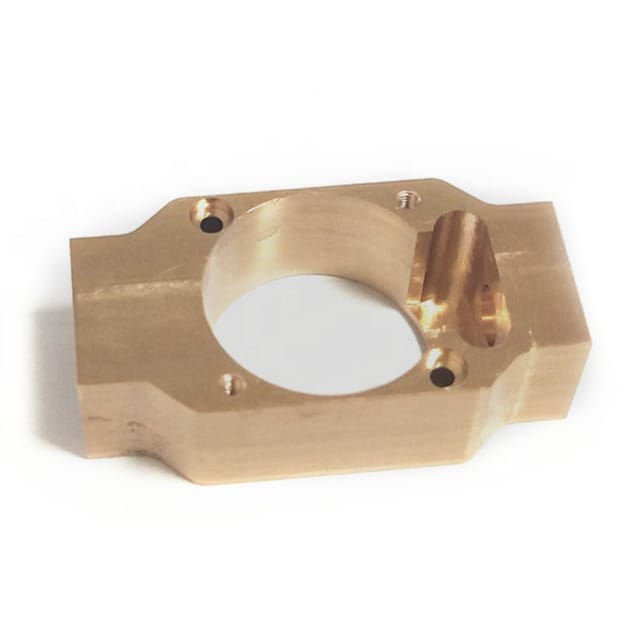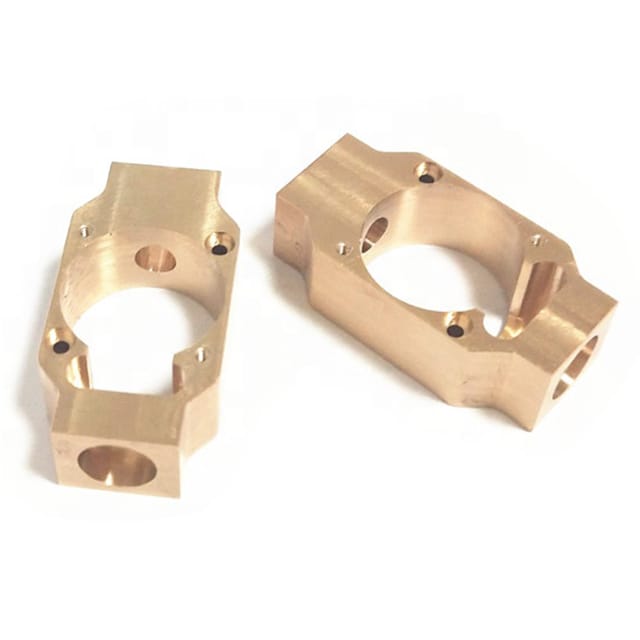Description
[section]
[row]
[col span__sm=”12″]
Brass is an alloy composed of copper and zinc. The brass composed of only copper and zinc is called common brass, while the brass composed of more than two elements is called special brass. With good abrasive resistance, brass is often used to manufacture valves, water pipes, connecting pipes between the external and internal unis of air conditioning, as well as radiators and similar custom cnc milling brass components.
Common grass refers to an alloy composed of copper and zinc.
When the content of zinc is less than 35%, zinc dissolves in the copper to form single phase a. It is called single phase brass featuring good plasticity and suitable for both cold and hot pressure machining.
When the content of zinc is 36%~46%, besides single phase a, there is a copper-zinc based β solid solution. It is called dual phase brass which is suitable only for hot pressure machining because of decreased plasticity and increased tensile strength by phase β.
If the mass fraction of zinc keeps increasing, its tensile strength will decrease and make it useless.
The code is “H+number”, where the former means brass and the latter indicates the mass fraction of copper.
For example, H68 implies that the content is 68% for copper and 32% for zinc. For casting brass, a prefix of Z is used, like ZH62.
For example, Zcuzn38 refers to the casting brass with the content is 38% for zinc and the rest for copper.
H90 and H80 are both single phase brasses and in the color of gold and thus used for gold color coatings for decorations and medals.
H90 and H80 are both dual phase brasses that are widely used for the structural custom CNC milling brass componentss of electric appliances, such as bolts, nuts, gaskets and springs.
Normally, cold deformation machining is used for single phase brass and thermal deformation machining is used for dual phase brass.
[/col]
[/row]
[row]
[col span=”8″ span__sm=”12″]
Application scope of brass: Brass is an alloy composed of copper and zinc. The brass composed of only copper and zinc is called common brass, while the brass composed of more than two elements, such as plumbum, stannum, manganese, nickel, iron, and silicon, is called special brass. Brass has high abrasive resistance. Special brass features high strength, high hardness, and good chemical resistance, and its machining mechanical properties are also better than common brass. The seamless copper tubes made of brass are soft, with good abrasive resistance, and applicable to heat exchangers, condensers, low temperature pipelines, and submarine transport pipes. Brass is used to manufacture sheets, bars, rods, pipes, and casting parts. With 62%~68% content of cooper, brass has high plasticity and is used to manufacture equipment with pressure resistance.
[/col]
[col span=”4″ span__sm=”12″]
[ux_image id=”1515″ image_size=”original”]
[/col]
[/row]
[row]
[col span=”4″ span__sm=”12″]
[ux_image id=”1516″ image_size=”original”]
[/col]
[col span=”8″ span__sm=”12″]
Pressure machinability of brass: The α single phase brass (from H96 to H65) has good plasticity and endures both cold and thermal machining, intermediate temperature embrittlement tends to occur during its thermal machining like forging. The specific temperature range of possible intermediate temperature embrittlement varies depending on the content of Zn, normally 200 – 700 ℃, so the temperature should be above 700 ℃ during thermal machining. The temperature range of possible intermediate temperature embrittlement occurs mainly because two ordered compounds, Cu3Zn and Cu9Zn, exist in the α phase area of the Cu-Zn alloy series. During heating with medium and low temperature, ordering transition occurs and embrittles the alloy. Besides, the detrimental impurities of trace plumbum and bismuth in the alloy reacts with copper to form an eutectic film which is distributed on the crystal boundary. The intercrystalline fracture occurs during thermal machining. The practice shows that adding a trace of cerium can effectively eliminate intermediate temperature embrittlement.
[/col]
[/row]
[row]
[col span=”8″ span__sm=”12″]
mechanical properties of brass: The mechanical properties of brass differs according to its content of zinc. Figure 7 shows the curve of mechanical properties of brass varying as the content of zinc changes. For the α brass, as the content of zinc increases, both σb and δ keep rising. For the (α+β) brass, before the content of zinc increases to about 45%, its strength at room temperature keeps improving. If the content of zinc increase further, its strength decreases sharply because the r phase (a Cu5Zn8 based solid solution) with larger brittleness occurs in the alloy structure. The (α+β) brass’ plasticity at room temperature always decreases as the content of zinc increases, so the copper-zinc alloy with the content of zinc over 45% is useless.
[/col]
[col span=”4″ span__sm=”12″]
[ux_image id=”1517″ image_size=”original”]
[/col]
[/row]
[/section]
 Call Us Today! (+86) 188-2253-7569
Call Us Today! (+86) 188-2253-7569

